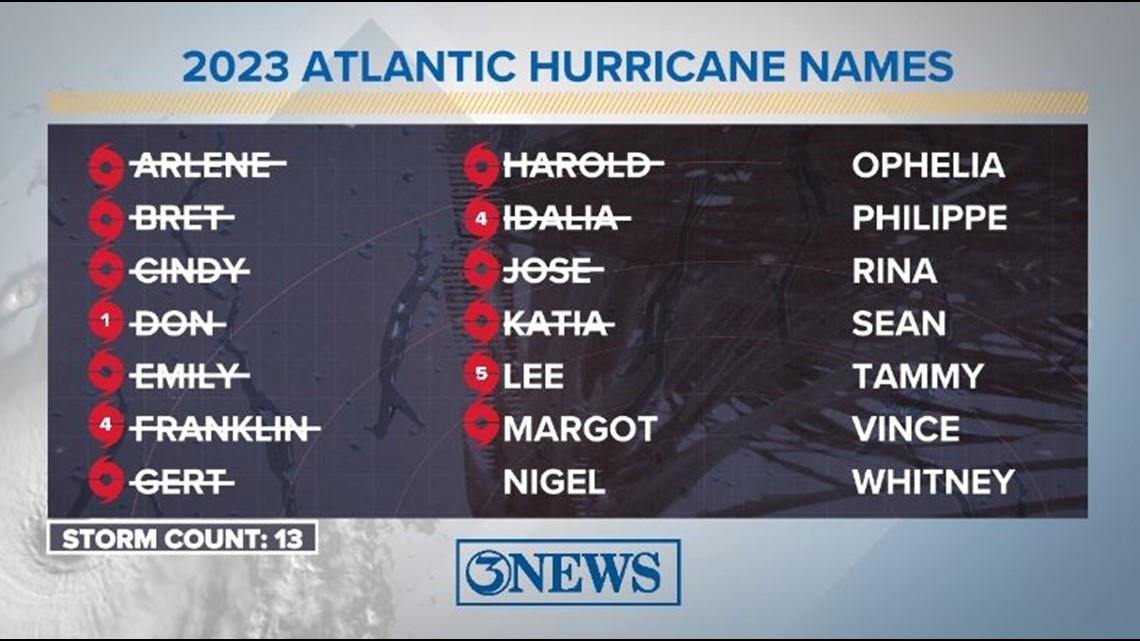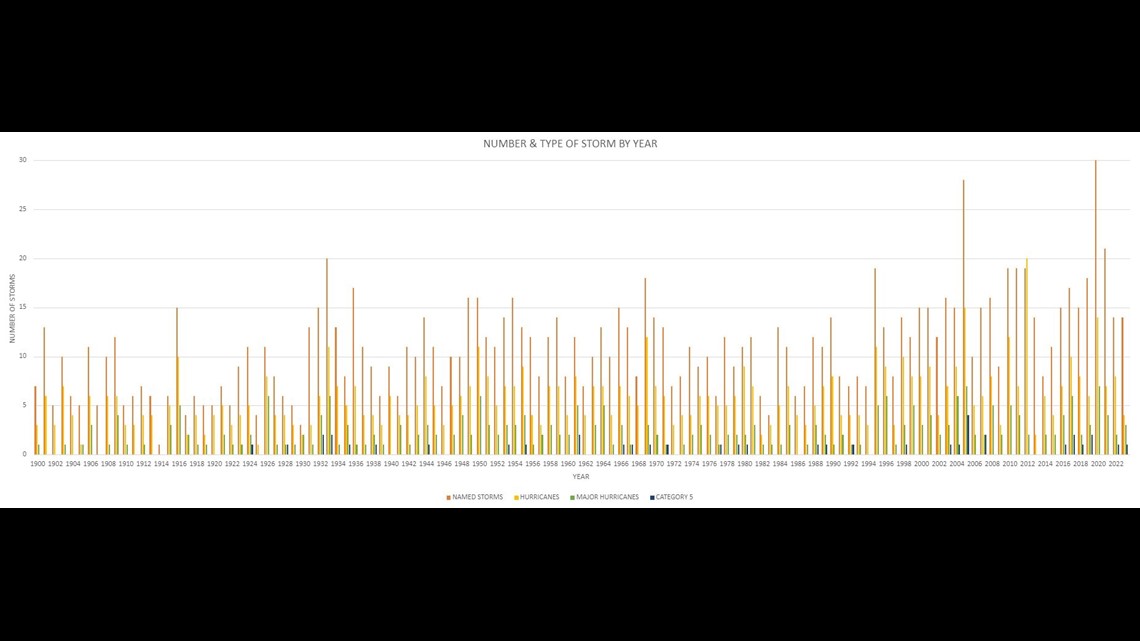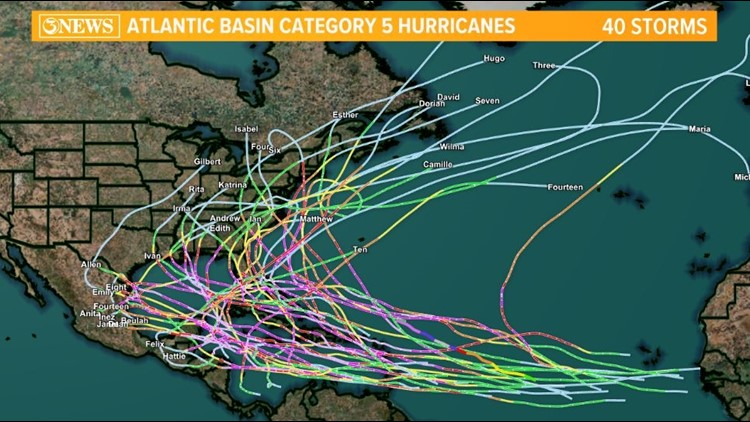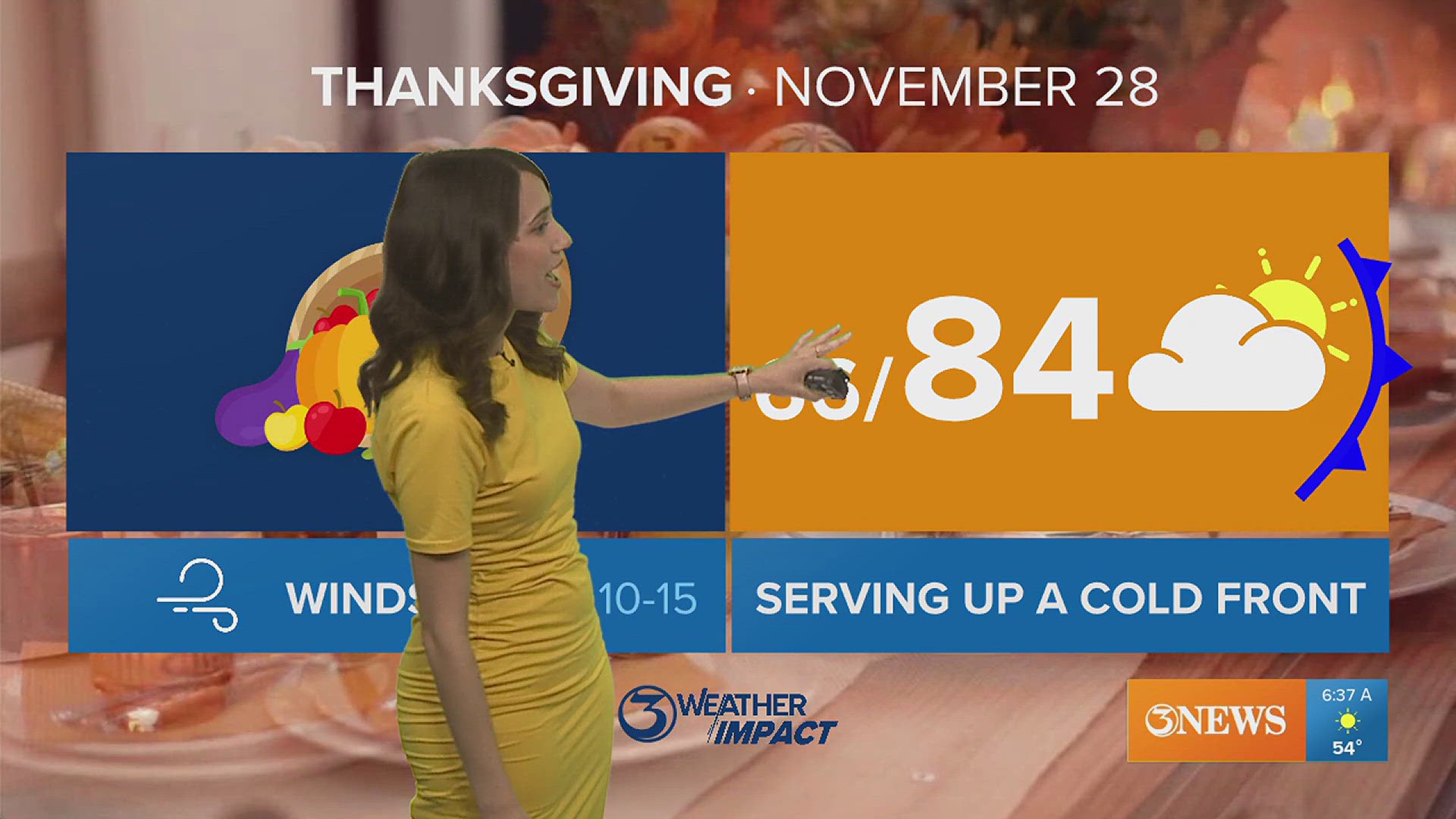While the majority of named tropical storms are able to strengthen into hurricanes, a select few are able to make it to major hurricane status (Category 3+). Even fewer are able to strengthen into powerful Category 5 storms.
Hurricane Lee was the first Category 5 hurricane of the 2023 Atlantic Hurricane Season. The storm was at its strongest early Friday morning with sustained winds of 165 mph and gusts up to 200 mph.


In recent years, we've seen incredibly powerful and notably destructive storms such as Harvey, Michael, Dorian, Laura, Ida, and Ian. Surprisingly, only two of these storms - Michael and Dorian - were Category 5 strength at landfall. Ian had strengthened to Category 5 status prior to making landfall as a Category 4.
As a reminder: every storm is different. Hurricanes - and even tropical storms - can be deadly at any size or strength. Multiple hazards such as storm surge, extreme wind, flooding, and tornadoes exist with every storm.
Since 1900, there have been 1,364 named* tropical storms, 714 hurricanes, and 273 major hurricanes in the Atlantic Basin, with many more unnamed tropical depressions.
*named includes unnamed tropical cyclones that were retroactively deemed to meet the qualifications of a tropical storm.


NAMING TROPICAL CYCLONES
Speaking of naming storms, that only started in 1950. Storms were named based on the Joint Navy/Army Phonetic Alphabet. In 1953, we began using female names for storms.
The system that we still use today was introduced in 1979 - male and female names. Names repeat every six years, and the name genders alternate every other year.
The only reason a name would not repeat in six years is if it is retired. A name is retired when a storm was so costly or devastating that it would be insensitive to re-use the name. There is no minimum hurricane category required to retire a name. Since 1954, 96 storm names have been retired.
This year, Harold replaced the 'H' name from six years ago - Harvey.
CATEGORY 5 HURRICANES
The first official Category 5 hurricane in the Atlantic was recorded in 1924, the "Cuba" hurricane. Prior to modern storm-naming conventions, there had been nine Category 5 storms in the Atlantic.
So, how many total Category 5 hurricanes have there been?
Officially: there have been 40 Category 5 hurricanes in the Atlantic Basin.
Unofficially: probably more.
Other Category 5 storms likely existed, with researchers and scientists finding evidence of other occurrences prior to modern-day record keeping.
This means that 6% of hurricanes and 3% of all named tropical storms strengthen to a Category 5 hurricane.


The strongest Category 5 storm in the Atlantic was Hurricane Allen (1980). Allen holds the title for the strongest hurricane on record in the Atlantic Basin by wind speed, with sustained winds of 190 mph. Allen made landfall near the United States-Mexico border, bringing tropical-storm force winds and heavy rains to the Coastal Bend.
RETIRED CATEGORY 5 NAMES
Allen is one example of a Category 5 hurricane that had its named retired.
Since the naming of tropical cyclones began, 26 names of Category 5 storms have been retired. Four names of Category 5 storms - Esther, Edith, Emily, and Lorenzo - have not been retired. It remains to be seen if Lee will be retired.
While not retired, Esther (1961) and Edith (1971) are no longer a part of the six-year name rotation. Prior to 1979, some storm names were dropped with no reason being cited.
In terms of numbers, 87% of named Category 5 storms (excluding Lee) have had their name retired. However, only 40% of retired names were from Category 5 storms.
This again emphasizes the fact that any storm - Category 5 or not - can have devastating consequences.
The numbers and statistics in this article are valid as of September 9, 2023.


